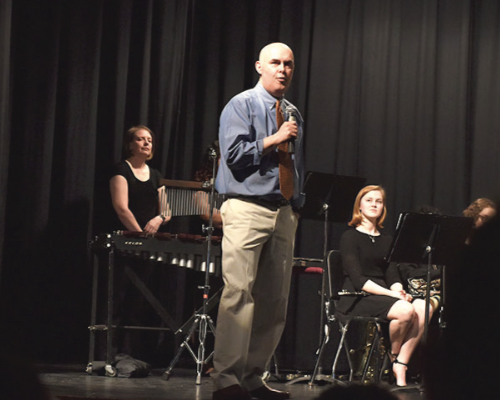William Penn project honors historic High Point high school

By Nick Bainbridge // News Editor
For the past four years, Dr. Paul Ringel, associate professor of history at High Point University, has been collaborating with HPU students and members of Penn-Griffin School of the Arts on a project documenting the history of William Penn High School. On Feb. 9, Ringel presented this project to the High Point Community.
William Penn High School was an African American institution that educated black students in High Point until the end of racial segregation in schools. It is known for the famous Woolworth’s lunch counter sit-in protest organized by some of its students on Feb. 11, 1960.
During the 1960’s, racial segregation was still an omnipresent force in American society, and High Point was no exception. At many restaurants like the Woolworth’s lunch counter, black community members could purchase food, but they were not allowed to sit and eat at the whites-only counter.
Some, like Mary Lou Andrews, a 15-year-old girl from William Penn High School, decided that something needed to be done in protest of Woolworth’s and other restaurants with similar bans.
Andrews gathered 23 of her classmates, as well as two black students from High Point High School, and staged a non-violent sit-in at Woolworths.
In response to their efforts, High Point’s mayor Jesse Washburn made the Human Relations Committee, an organization that worked to address the concerns of the William Penn students, and desegregated all lunch counters in High Point by 1963.
Dr. Ringel’s and his coworker’s efforts focus on uncovering the history of these influential students’ lives and how they interacted with their community.
“When we started this project we had 3 goals,” Ringel explained. “First, we wanted this to serve a broad audience—the entire community. Second, that we give a voice to the alumni of William Penn. And third, we wanted to use this project as a means of building community bonds.”
Ringel, his students and the members of the Penn-Griff in School of Arts developed a publicly accessible website where people can find information about the institution and the types of students who attended it.
Not only did this school produce students who would work for social change in their community, but William Penn High School also prepared its students for the challenges that they would face in their careers, racial or otherwise.
This is heavily supported by the several interviews conducted by Ringel’s students with alumni from William Penn.
“There were quite a few guys that went out and started their own business and became very successful at it. Never went to college, just straight out of high school they went to work with somebody laying brick and just took it from there,” said Roger Wilson, a graduate of William Penn High School in 1967. “But it all started right there at Penn.”
The William Penn Project serves not just as a reminder of past circumstances of societal discrimination, but also as an acknowledgement of a school that was dedicated to offering its students the education they needed to become successful in their futures.